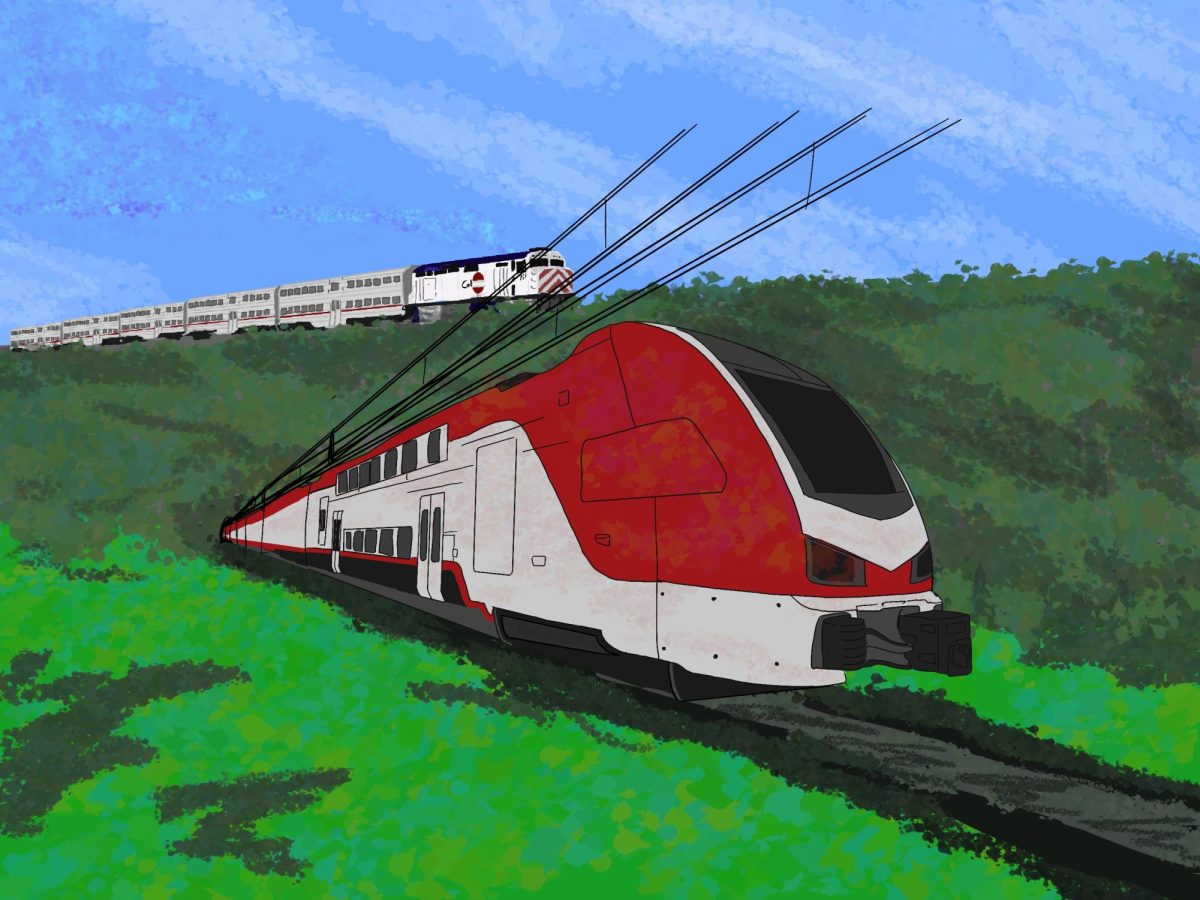The California Transportation Commission recently announced the allocation of $80 million from the California State Transportation Agency to help build the country’s first battery-electric multiple unit train which will run from Gilroy to San Francisco. Caltrain will begin construction in Sept. and be piloted in 2024.
According to SamTrams Public Affairs Specialist Dan Lieberman, the new trains will feature a motor in each car, as opposed to the current diesel system.
“It is one of the reasons why they are a lot more efficient and can accelerate and decelerate faster,” Lieberman said. “The battery powered part is particularly relevant for our servers down to Gilroy as the track south of San Jose is actually owned by Union Pacific, so this part of the corridor will not be electrified.”
Additionally, Lieberman said the train, which is manufactured by Stadler, will have an electrified corridor or tracks from San Jose to San Francisco and non-electrified tracks from the Gilroy station.
“While we’re electrifying our part of the corridor on the north end, that part does not yet have the wiring,” Liberman said. “In order to get electrified service, it needs to have a connection to be able to charge on our infrastructure and then close off that power when it gets off the head down to Gilroy.”
Lieberman also said the transition to the battery-powered fleet will positively impact daily commuters living in Gilroy because there will be more trains available, including the battery electric multiple unit train that will be used throughout the rest of the corridor.
“It’s the big one for people down in the Gilroy segment of our track because they will be able to ride on our modern electric trains that will look like the rest of the fleet,” Lieberman said. “Its current plan is after electrified service that will be running diesel trains down on that section and then they will transfer when they get up to the electrified track.
According to Lieberman, the train battery will be charged by connecting to overhead wires in a catenary system.
“The wires will essentially charge the battery so it will be able to coast off that power once it leaves our electric infrastructure to have that skill,” Lieberman said.
Lieberman also said that although Caltrain owns the new electric trains, there is no set timeline for when they will go into service.
“This is the first battery powered electric train in the country, so there’s going to be a great deal of testing first,” Liberman said. “We are working through the process of getting these trains certified to be legal, which will give us a better understanding of when we can roll them out.”
Liberman said the electrified train has multiple advantages over the diesel train.
“We’re talking cleaner, greener, quieter, more comfortable, more connected, better amenities on board,” Liberman said. “It’s a much better way to travel and our diesel (trains) have put in a lot of good work. But, these are trains that have been in service for multiple decades and are approaching the end of their useful life.”
Loomis also said that while electric technologies may help reduce carbon emissions, they may also require more storage.
“Everything in the environment is a trade-off,” Loomis said. “I might not have carbon emissions, but I’m gonna have more mining waste that can be toxic.”
Loomis said that one of the most significant environmental advantages to the electric train is the mitigation of air pollution.
“If you’re taking cars off the road, that’s good,” Loomis said. “If you make zero emission trains, then you’re decreasing the footprint of that agency. But, unless you get more people on the trains and less people driving, is it affordable to continue?”
Senior Taiya Hussein, who takes the Caltrain with her friends, said that the zero emission train will increase the rides she takes on the future trains, because it is a more sustainable option than driving.
“I’ll use the electric train more because it’s better for the environment, so I will feel better about my decisions,” Hussein. “It makes me more conscious of how much I use my car, and makes me want to use the train more often, considering it will be environmentally friendly.”

